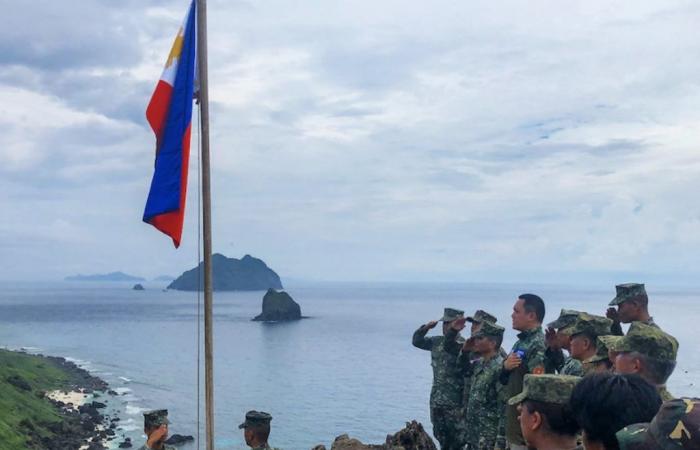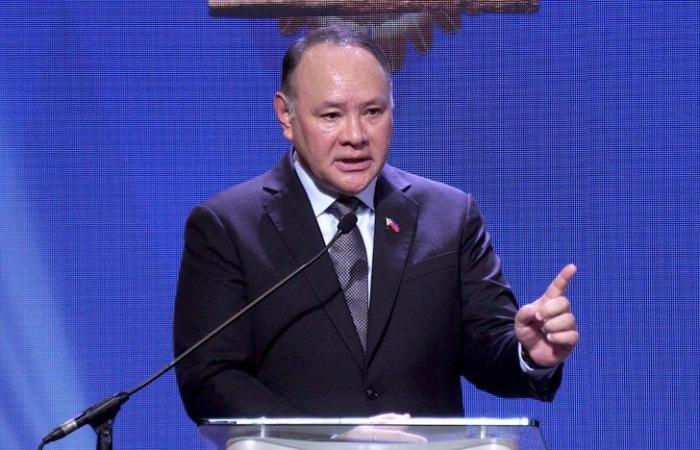The Philippines officially kicked off its new Comprehensive Archipelagic Defense Concept (CADC), a shot across China’s bow which among other things orders an increased military presence on the northernmost island province of Batanes near Taiwan.
Philippine Defense Secretary Gilberto Teodoro Jr made it clear that the new strategic doctrine transcends the “directives” of any specific president or administration and relies instead on “whole-of-nation” long-term implementation planning.
Accordingly, Teodoro called on all “commanders and units” in the Armed Forces of the Philippines (AFP) “to exert all efforts to operationalize” the new strategic doctrine.
The Philippine government is yet to publish a full white paper on the new strategic doctrine. The defense chief has described the CADC as a comprehensive attempt at “developing our capability to protect and secure our entire territory and Exclusive Economic Zone (EEZ) in order to ensure that our people and all the generations of Filipinos to come shall freely reap and enjoy the bounties of the natural resources that are rightfully ours within our domain.”
The CADC marks in many ways a belated re-orientation of strategic focus from troubled borders and provinces in the south – a cauldron of insurgencies for the past half a century – toward highly strategic and increasingly tense northern waters and territories, with a growing focus on threats posed by a resurgent China.
Recognizing the implications of the strategic reset, Beijing warned Manila to “tread carefully” and consider its “red line,” namely China’s reunification plans with the self-governing island of Taiwan. In particular, Beijing is known to be troubled by Manila’s plans to expand military cooperation with Washington in Philippine provinces bordering Taiwan.
The US Pentagon is not only set to enjoy expanded access to various bases in the northern Philippine provinces of Cagayan and Isabela but is also set to develop a civilian port in Batanes, which is separated from Taiwan by a narrow channel.
Batanes Governor Marilou Cayco has said that the US Army is set to arrive in her province next month to discuss the development of a deep-water port facility, which would serve as an alternative to an aging and relatively rudimentary port on the island’s western side.
China likely believes that Pentagon-built facilities will ultimately have dual-use purposes, serving as critical infrastructure during any contingency over Taiwan. But the Philippines insists that it’s simply looking after its own national interest by preparing for any eventualities in its increasingly vulnerable northern borders.
Earlier this month, China’s paramount leader Xi Jinping called on the People’s Liberation Army to “coordinate preparations for military conflicts at sea, protect the country’s maritime rights and interests and the development of the maritime economy.”
Xi’s comments have only reinforced concerns in Manila about a potential Chinese invasion of Taiwan and/or escalation in maritime jostling in the South China Sea, where China and the Philippines have increasingly tense competing claims.
In response, the Philippines has begun to treat the South China Sea, Bashi Channel and Taiwan Strait as one integrated strategic theater that borders much of the Southeast Asian nation’s northern provinces.
“I emphasize that this is a strategic action and will not need constant directives to carry out,” the Philippine defense chief argued after announcing the new CADC national security strategy.
Far from a quixotic or recklessly provocative decision by the Ferdinand Marcos Jr administration, the Philippine defense chief argued the new strategic doctrine is a logical strategic move in line with the strategic realities of the 21st century.
With one of the world’s longest coastlines, the Philippines has had an unusually land-based defense strategy for almost half a century, mainly due to ongoing Islamic and communist insurgencies on the southern island of Mindanao.
With the Philippines designated as the “second front” in America’s Global War on Terror in the early 2000s, the Philippine military became singularly focused on counterterrorism activities, which culminated in the devastating Battle of Marawi against so-called Islamic State-affiliated groups in 2017 .
China’s growing assertiveness in the South China Sea coupled with growing doubts over US commitment under the two sides’ mutual defense treaty has forced the Philippines since to modernize its armed forces, with a new growing focus on naval capabilities.
Geographically, the Southeast Asian nation has also shifted its focus to its northern territories, which border the South China Sea, Taiwan and the Philippine Sea.
Accordingly, the Philippines has engaged in a double-movement strategy whereby it’s simultaneously expanding its own military presence as well as bolstering security cooperation with the US in the northernmost provinces of Cagayan, Isabela and, most crucially, Batanes.
This week, over 100 residents of the Batanes Islands joined the reservist forces of the Philippine Navy as part of a broader effort for a “secure and safe environment” in and around the country’s “last and northernmost frontier”, according to Philippine Navy Chief Vice Admiral Toribio Adaci Junior.
This follows unprecedented upgrades and construction at Philippine northernmost bases, including on the island of Mavulis, which is barely 100 kilometers away from Taiwanese territories.
This week, Philippine defense chief Teodoro Jr also visited the northern province of Aurora, which faces the Philippine Sea, to inspect newly refurbished facilities, most notably the Naval Installations and Facilities-Northern Luzon (NIF-NL) in Casiguran.
The Philippines is also reportedly set to deploy its newly acquired BrahMos supersonic cruise missiles, which were purchased from India and have a range of around 900 kilometers, to Basco Island in Batanes.
Alerted by reports of Chinese research vessels roaming the Philippine Sea, the Philippine Coast Guard (PCG) deployed BRP Gabriela Silang (OPV-8301), among its most modern vessels, for a two-week mission to Batanes and the Philippine Rise, also known the Benham Rise.
“We will also check the reported Chinese research vessels in [Philippine] Rise,” PCG spokesperson Rear Admiral Armando Balilo said in a statement, highlighting the need for the country to step up its “maritime domain awareness, intensify [its] presence in Northern Luzon, and monitor [and protect] local fishermen.”
President Marcos Jr, meanwhile, described the presence of Chinese vessels in the area as “a clear intrusion” into Philippine maritime territory and that China’s maritime presence in the area, even ostensibly under civilian guidance, was “of great concern.”
The Philippines’ decision to expand cooperation with the Pentagon in the area is of major concern to China.
Next month, the two allies are expected to conduct drills near Batanes as part of the annual Balikatan Exercises, which drew 12,000 American troops last year in addition to troops from observer nations such as Australia and Japan.
Meanwhile, US Special Operations Forces have been reportedly permanently assigned to Taiwan’s frontline islands of Kinmen and Penghu, reflecting Washington’s growing sense of urgency over a potential war with China over the democratic island.
It remains to be seen, however, whether the Philippines will grant US troops expanded and extensive access to prized bases in the northern Philippines under the Enhanced Defense Cooperation Agreement.
So far, Marcos Jr has equivocated on the precise nature of America’s presence at northern Philippine bases under EDCA, even as the Pentagon openly steps up its presence at several bases in Cagayan and Isabela provinces.
But what’s clear is that Washington will likely press its Southeast Asian ally for maximal access, including the ability to store weapons and deploy sophisticated military hardware to deter and/or prepare for an all-out war with China over Taiwan.
If Beijing continues to press the Philippines in other theaters, namely in the South China Sea, Manila may eventually sleepwalk into full alignment with Washington over the fate of Taiwan.
Follow Richard Javad Heydarian on X at @Richeydarian






